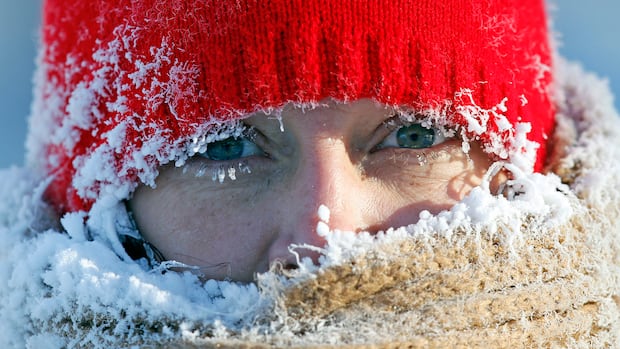ScienceIn 2014, the term “polar vortex” burst on the scene across Canada and the U.S. as temperatures plunged. In some places, it was colder than it was on Mars. Well, get ready to hear more about it. Colder-than-normal temperatures could start as soon as next weekNicole Mortillaro · CBC News · Posted: Nov 24, 2025 4:00 AM EST | Last Updated: 3 hours agoListen to this articleEstimated 3 minutesThe audio version of this article is generated by text-to-speech, a technology based on artificial intelligence.Get ready for some much colder weather. Forecasters are calling for a return of the polar vortex in the coming days and weeks. (Eric Miller/Reuters)In 2014, the term “polar vortex” burst on the scene across Canada and the U.S. as temperatures plunged. In some places, it was colder than it was on Mars. Well, get ready to hear more about it. Forecasters say parts of Western and Central Canada are about to feel the effects of the phenomenon that brings frigid weather in the coming weeks. And it could move to Eastern Canada.“The European [model], the latest one, is looking like a pretty impressive cold pattern setting up,” said Judah Cohen, a climatologist at the Massachusetts Institute of Technology (MIT).“The cold is going to slide down east of the Rockies … you’ll hear about Calgary, definitely Winnipeg.”Though the term became popular a decade ago, the fact is, a polar vortex is always around. It’s just that usually, it remains high in the north. A polar vortex sits in the upper atmosphere, specifically in the stratosphere. If it’s stable, that’s where it remains. However, every once in a while in winter, it destabilizes and meanders farther south, bringing cold air to lower latitudes. It interacts with the jet stream in the troposphere, basically, where we humans live, and that’s what brings the colder-than-normal temperatures.“Once every two years there is a disruption of the polar vortex. So you get very strong warming like tens of degrees Celsius in a few days, which is associated with a breakup or stretching or disruption of these winds,” said Michael Sigmond, a research scientist with Environment and Climate Change Canada (ECCC).An illustration of what happens when the polar vortex is disrupted. Typically, as seen at left, it stays some 15 to 50 km above the surface and remains in the Arctic. But when it weakens, as seen on the right, it can get disrupted, interacting with winds closer to the surface and bringing cold air to lower latitudes. (NOAA)Different kinds of polar vortexesNot all polar vortexes are the same, Cohen explained.One is called sudden stratospheric warming, where there is extreme warming in the upper atmosphere, roughly 30 kilometres above Earth. That disrupts the flow and brings it south.“Sudden stratospheric warming gets everybody the most excited,” Cohen said. “It can have a big impact, not because of so much as the intensity, but its long duration.”Then there are polar vortexes that split, and ones that just kind of stretch down over the south.So which one is this?The jury is still out, he said, though some believe that it will be a sudden stratospheric warming event, which, counter to its name, brings cold air down south. “If it indeed materializes, it would be the earliest on record,” Sigmond said.The U.S. side of Niagara Falls is shown beginning to thaw after the early January 2014 polar vortex event. (Nick LoVerde/The Associated Press)Interestingly, Sigmond left Toronto for the more temperate climes of Victoria after the 2014 polar vortex chill. “We moved in May, but I always say, oh, this was our goodbye,” he said.Whether or not this will be a sudden stratospheric warming event or just a plain old polar vortex doing its thing, doesn’t really matter, Cohen said. It’s going to be cold.But where will it go after affecting Western and Central Canada?“Does it dive straight south or does it kind of move eastward?” Cohen said. “That’s probably the biggest question.”ABOUT THE AUTHORBased in Toronto, Nicole covers all things science for CBC News. As an amateur astronomer, Nicole can be found looking up at the night sky appreciating the marvels of our universe. She is the editor of the Journal of the Royal Astronomical Society of Canada and the author of several books. In 2021, she won the Kavli Science Journalism Award from the American Association for the Advancement of Science for a Quirks and Quarks audio special on the history and future of Black people in science. You can send her story ideas at nicole.mortillaro@cbc.ca.Follow Nicole Mortillaro on Twitter
Monday, 24 Nov 2025
Canada – The Illusion
Search
Have an existing account?
Sign In
© 2022 Foxiz News Network. Ruby Design Company. All Rights Reserved.
You May also Like
- More News:
- history
- Standing Bear Network
- John Gonzalez
- ᐊᔭᐦᑊ ayahp — It happened
- Creation
- Beneath the Water
- Olympic gold medal
- Jim Thorpe
- type O blood
- the bringer of life
- Raven
- Wás’agi
- NoiseCat
- 'Sugarcane'
- The rivers still sing
- ᑲᓂᐸᐏᐟ ᒪᐢᑿ
- ᐅᑳᐤ okâw — We remember
- ᐊᓂᓈᐯᐃᐧᐣ aninâpêwin — Truth
- This is what it means to be human.
- Nokoma












